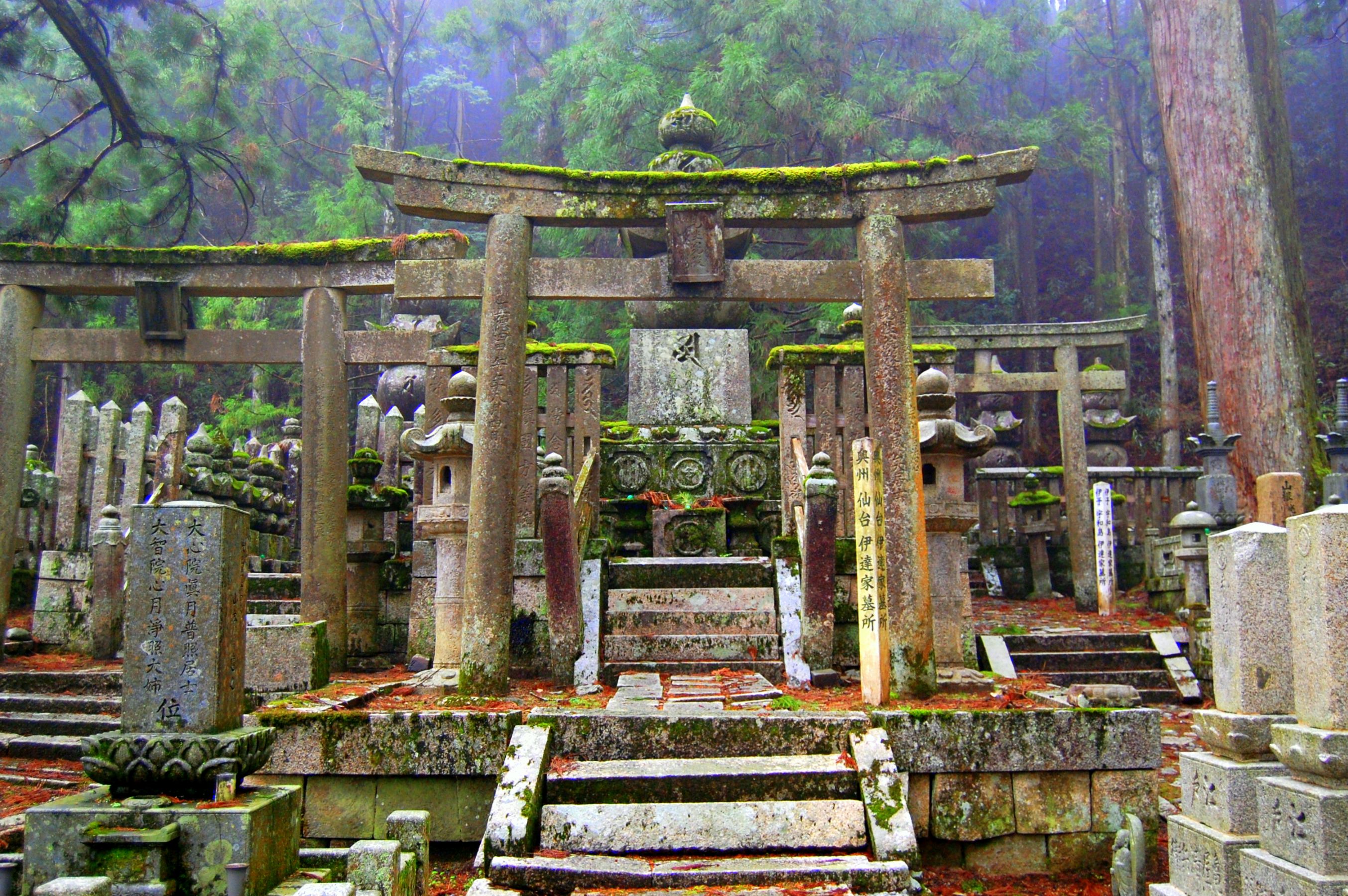Despite the 3 ½ hour travel time from Kyoto (Shinkansen-subway-train-cable car), we thoroughly enjoyed our brief stay in Koyasan. Founded in the 9th century, Koyasan is home to Shingon Buddhism and is considered of one of Japan’s holiest mountains ( a truly otherworldly place), in addition to having the most surreal walks.
With over 117 temples and 53 shukubo (think temple ryokan) set on spectacular forested hills, we found this monastic refuge to be magical and other-worldly. We were pleasantly surprised by the quality, sincere service we received at the Fukushi-Inn (ryokan). The mostly young, male Buddhist staff delivered a delicious, tofu-centered vegetarian kaiseki dinner that we all thoroughly enjoyed. The meal was skillfully cooked without any use of meat, fish, onions, or garlic, as per Buddhist dietary restrictions.

Koyasan’s Okuno-in Cemetery temple grounds we found to be most interesting. We walked along an eerie, winding cobbled path lined by tall cypress trees with an estimated half-million tombs set on both sides. Many noteworthy and peculiar individuals are interred here, including the White Ant Memorial built by a pesticide company to honor the thousands of ants that they exterminated!
Koyasan was established in 816 as a religious community by Kūkai, founder of the Shingon sect of Esoteric Buddhism. Kūkai, known after his death as Kōbō Daishi, was revered as a Bodhisattva, calligrapher, scholar, and inventor of Japanese kana syllabary. He is believed to be meditating in his tomb, not dead but awaiting the arrival of Miroku (the future Buddha). It is thought that only Kōbō can translate the message that Miroku will bring. Hence, the vast cemetery of Oku-no-in resembles an amphitheater crowded with souls gathered in expectation of this heavenly sermon.
For those interested in the Spartan spiritual immersion in the Shingon Buddhist life (and Japanese language immersion if chosen), multiple night stays at the temple lodgings (shukubos) is a meaningful, though challenging adventure. You will experience eating monk’s vegetarian cuisine, attend morning prayers and various other daily rituals of the sect. Approximately 50 temples offer this service to both pilgrims and visitors.

Rousoku Matsuri, Koyasan’s Candle Festival
Each year on the 13th of August, the ‘Rousoku Matsuri’ Candle Festival and ceremony take place in the evening with people walking up to Torodo Temple in Okuno-in for the consolation of the departed souls of their ancestors. They place candles to illuminate both sides of the two-kilometer approach, beginning at a place in front of the Ichino-hashi bridge, the entrance to the front approach of Okuno-in. The memorial service itself is held from 8 o’clock in the evening at Torodo Temple.